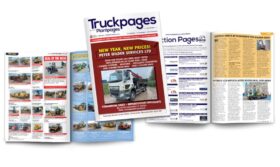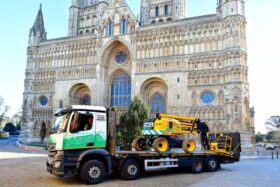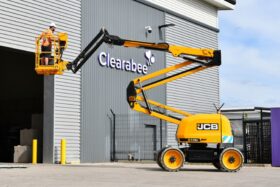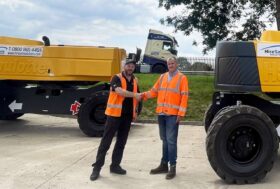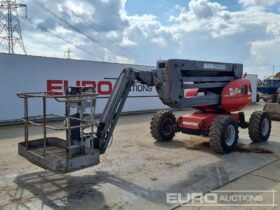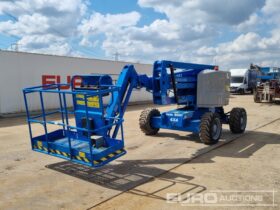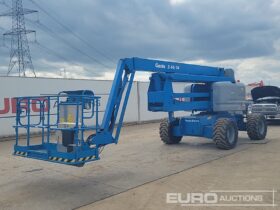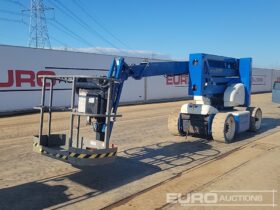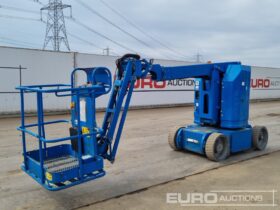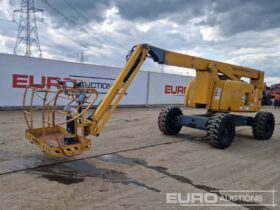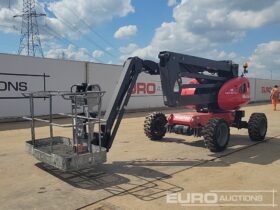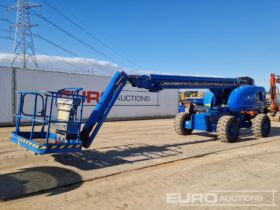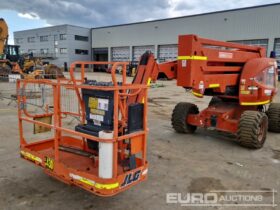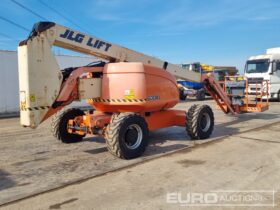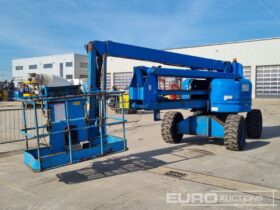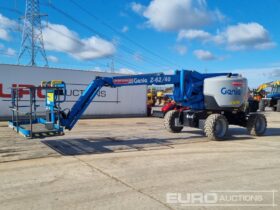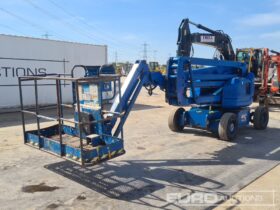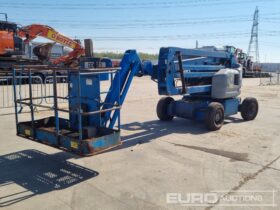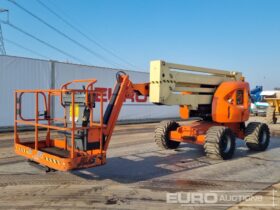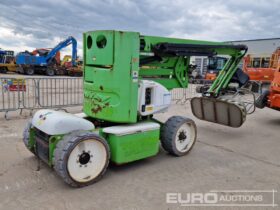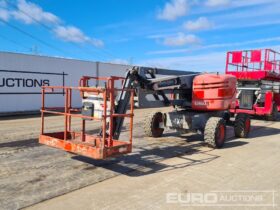Boom Lifts for Sale (57)
A boom lift is a type of aerial work platform that can reach high places that are otherwise inaccessible. It consists of a platform or bucket attached to a hydraulic arm that can extend and rotate. Boom lifts are used for various purposes, such as construction, maintenance, inspection, painting, pruning, and rescue operations.
There are different types of boom lifts, such as telescopic, articulating, and trailer-mounted. Telescopic boom lifts have a straight arm that can extend to a great length, making them suitable for reaching high and far locations. Articulating boom lifts have a jointed arm that can bend and maneuver around obstacles, making them ideal for accessing tight and confined spaces. Trailer-mounted boom lifts are mounted on a trailer that can be towed by a vehicle, making them easy to transport and set up.
More Boom Lifts Info
Boom Lift Pros & Cons
Boom lifts offer many advantages over other types of aerial work platforms, such as scissor lifts and cherry pickers. Boom lifts have a greater reach and versatility, allowing them to access a wider range of areas. Boom lifts also have a higher load capacity and stability, enabling them to carry more weight and equipment. Boom lifts are safer and more efficient than using ladders or scaffolding, as they reduce the risk of falls and injuries.
However, boom lifts also have some drawbacks and risks that need to be considered before using them. Boom lifts require proper training and certification to operate safely and legally. Boom lifts can be affected by weather conditions, such as wind and rain, which can compromise their stability and performance. Boom lifts can also cause damage to the surrounding environment, such as power lines, trees, and buildings, if not used with caution and care.
Therefore, it is important to follow some safety tips when using a boom lift, such as:
– Inspect the boom lift before each use and report any defects or malfunctions.
– Wear appropriate personal protective equipment, such as hard hats, gloves, and harnesses.
– Check the ground conditions and clear any obstacles or hazards before setting up the boom lift.
– Follow the manufacturer’s instructions and specifications for operating the boom lift.
– Do not exceed the maximum load capacity or height limit of the boom lift.
– Do not move the boom lift while the platform is raised or occupied.
– Do not use the boom lift near power lines or other sources of electricity.
– Do not use the boom lift in adverse weather conditions or low visibility.
– Do not leave the boom lift unattended or unlocked when not in use.
Latest News About Boom Lifts
JCB boom time for McKinty Construction Ltd
Commercial and agricultural construction company, McKinty Construction, has purchased two of the first new JCB A45EH articulated booms in Northern Ireland. The new machines are being used at the AI Services artificial insemination bull stud in Newtownabbey, Co Antrim. Supplied by local dealer Dennison JCB, the brand new JCB A45EH models join four JCB rough...
Truck & Plant Pages Issue 254 is out now
Any business involved in road maintenance should take a look at this Euro 6 LEZ compliant 26 tonne DAF CF grab loader on this week’s front cover. Perfect for those smaller jobs where an 8×4 truck is too unwieldy, this 2020 CF340 is fitted with a Palfinger Epsilon M125 crane with a clam shell grab....
Hybrid JCB articulated boom deal for ABBA
Lincolnshire hirer ABBA Plant Hire has invested in a ten-strong fleet of JCB’s new hybrid drive articulated booms and got straight into the Christmas mood with its new purchases. Supplied by dealer TC Harrison JCB, the new machines are the first of JCB’s new diesel / electric hybrid drive A45EH models purchased in the UK....
FIRST JCB ELECTRIC BOOM IN THE UK
A leading clearance and waste management company has bought the first JCB A45E electric articulated boom in the UK. Birmingham-based Clearabee has taken delivery of the new machine for work at its waste management site in Birmingham. Supplied by dealer Watling JCB, the new A45E joins an existing JCB TM420 in the Clearabee fleet. The...
Haulotte Boom Lifts for Hire Safe
Hire Safe Solution is expanding its fleet with Haulotte aerial work platforms capable of reaching great heights to meet market needs. In total, 6 HA32 RTJ PRO units have been delivered in July to one of the leading providers of big booms in the UK access market. The 32 m all terrain articulating booms are...


